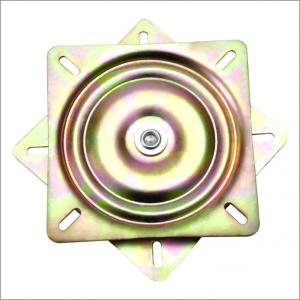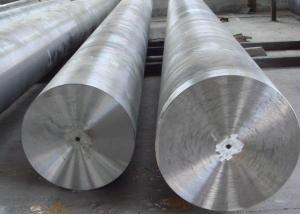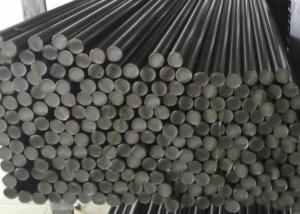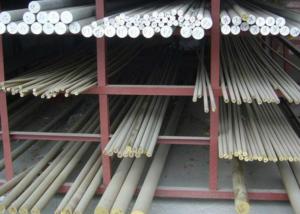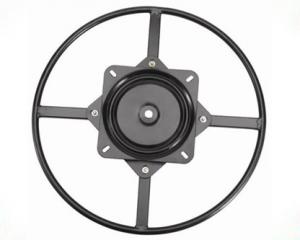Large Stock Grade S45C Mild steel round Bar Sizes
- Loading Port:
- Shanghai
- Payment Terms:
- TT OR LC
- Min Order Qty:
- 3 m.t.
- Supply Capability:
- 100000 m.t./month
OKorder Service Pledge
OKorder Financial Service
You Might Also Like
Item specifice
Large Stock Grade S45C Mild steel round Bar Sizes
Details Information of Large Stock Grade S45C Mild steel round Bar Sizes
| Name | SAE1045 Carbon Steel Round Bar |
| Shape | Round Bar/Square Bar/Flat Bar/Plate/Wire |
| Standard | GB/ASTM/SAE/AISI/DIN/JIS/EN/BS |
| Surface Treatment: | Black/Peeling/Polished/Machined |
| Delivery Condition: | Hot Rolled or Forged/Peeled or Black Surface |
| Test | SGS/UT 100% Elements Testing |
| Certificate: | ISO/Mill Certificate |
| Service: | 24 hours online service / |
| more than 20 years trading and manufacture | |
| Quality Assurance: | the third party inspection, such as SGS, BV, TUV…etc. is acceptable |
| Packaging Details: | Seaworthy Packaging or as per customer's packing instruction |
| Carbon structure round bar | Q195 Q235A Q235B 10# 20#-55# S45CB |
| Low alloy high strength round bar | Q345A/Q345C/Q345D Q345B Q345E |
| Alloy structure round bar | SAE51B20 20Cr 40Cr 40CrV 20CrMo/30CrMo/35CrMo/42CrMo 20CrMoA/30CrMoA/35CrMoA/42CrMoA/42Cr ML20CrMo/ML30CrMo/ML35CrMo/ML42CrMo B7/SCM435-440 20MnTiB 20CrMnMo 20CrMoH 42CrMoH 40MnB/40MnBH 30Mn2-40Mn2 27SiMn 50CrVA 30CrMnTi |
| Pinion steel | 20CrMnTi 20CrMnTiH 20CrMnTiHCS/20CrMnTiHLD Q20CrMnTi-1/Q20CrMnTi-2 |
| Sucker rod | 20-35CrMoA |
| Free-cutting steel | GT1215S |
| Spring steel | 60Si2MnA 65Mn |
| Ball bearing steel | GCr15 |
Chemical Composition of Large Stock Grade S45C Mild steel round Bar Sizes
| C | Si | Mn | P | S | Cr | Ni | Cu |
| 0.17-0.24 | 0.17-0.37 | 0.35-0.65 | ≤0.035 | ≤0.035 | ≤0.25 | ≤0.25 | ≤0.25 |
| Tensile strength (σb/MPa) | Yield strength (σb/MPa) | Elongation (δ5/%) |
| ≥410(42) | ≥245(25) | ≥25 |
Company Introduction of Large Stock Grade S45C Mild steel round Bar Sizes
CNBM International Corporation is the most import and export platform of CNBM group(China National Building Material Group Corporation) ,which is a state-owned enterprise, ranked in 270th of Fortune Global 500 in 2015.
With its advantages, CNBM International are mainly concentrate on Cement, Glass, Iron and Steel, Ceramics industries and devotes herself for supplying high quality series of refractories as well as technical consultancies and logistics solution.

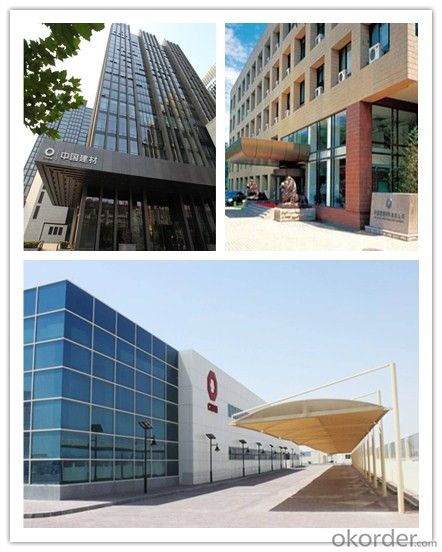
Certificates of Large Stock Grade S45C Mild steel round Bar Sizes
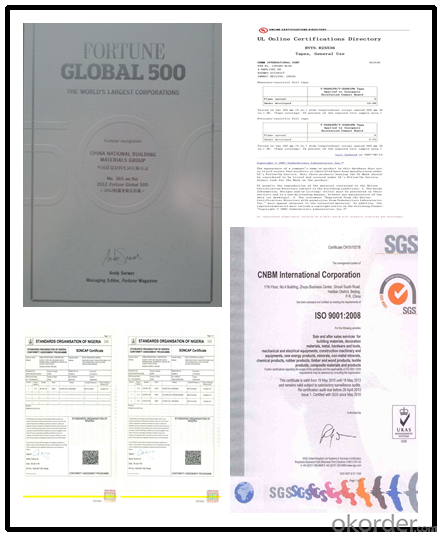
Packaging & Delivery of Large Stock Grade S45C Mild steel round Bar Sizes
Packaging Detail | Sea worthy packing /as per customer's packing instruction |
Delivery Detail | 15 ~ 40 days after receiving the deposit |
Products show of Large Stock Grade S45C Mild steel round Bar Sizes
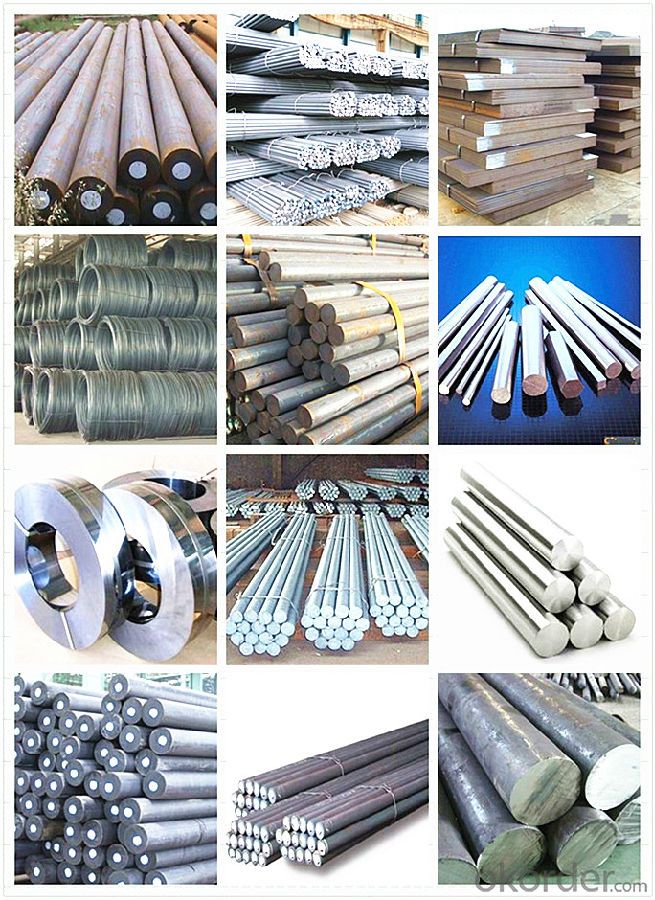
FAQ
Are you a trading company or manufacturer? | Manufacturer |
What’s the MOQ? | 3 metric ton |
What’s your delivery time? | 15-35 days after downpayment received |
Do you Accept OEM service? | Yes |
what’s your delivery terms? | FOB/CFR/CIF |
What's the Payment Terms? | 30% as deposit,70% before shipment by T/T |
Western Union acceptable for small amount. | |
L/C acceptable for large amount. | |
Scrow ,Paybal,Alipay are also ok | |
Why choose us? | Chose happens because of quality, then price, We can give you both. Additionally, we can also offer professional products inquiry, products knowledge train (for agents), smooth goods delivery, excellent customer solution proposals. |
What's your available port of Shipment? | Main Port, China |
What’s your featured services? | Our service formula: good quality+ good price+ good service=customer's trust
|
Where are your Market? | Covering more than 160 countries in the world |
- Q:Can special steel be used in construction?
- Yes, special steel can be used in construction. Special steel, also known as alloy steel, offers superior strength, durability, and resistance to corrosion and wear compared to regular steel. It is commonly used in the construction of high-rise buildings, bridges, and other structures that require exceptional strength and longevity. Additionally, special steel can be customized to meet specific project requirements, making it a versatile choice for construction applications.
- Q:How does quenching and tempering affect the hardness of special steel?
- Quenching and tempering significantly impact the hardness of special steel. Quenching involves rapidly cooling the steel from a high temperature, which results in a hard and brittle structure. On the other hand, tempering involves reheating the quenched steel to a specific temperature and then cooling it slowly, which reduces the brittleness and increases the toughness of the steel while maintaining a desired level of hardness. Overall, this heat treatment process modifies the microstructure of the steel, leading to a controlled increase in hardness while improving its mechanical properties.
- Q:How is special steel used in the manufacturing of tools and dies?
- Special steel is used in the manufacturing of tools and dies due to its exceptional properties, such as high strength, hardness, and wear resistance. These steels can withstand extreme temperatures and pressures during the forming, cutting, and shaping processes. They also have excellent dimensional stability, ensuring precise and accurate tooling. Special steel's unique composition and heat treatment capabilities allow for the production of durable and long-lasting tools and dies, which are essential for various industries like automotive, aerospace, and manufacturing.
- Q:What are the different methods of surface etching for special steel?
- There are several different methods of surface etching that can be used for special steel. These methods include: 1. Chemical etching: Chemical etching involves the use of various acids or other chemical solutions to selectively remove material from the surface of the steel. This method allows for precise control over the etching process and can create highly detailed patterns or designs on the steel surface. 2. Electrochemical etching: Electrochemical etching uses an electrical current to etch the surface of the steel. This method can be particularly effective for creating deep, uniform etches and is often used for marking or labeling purposes. 3. Laser etching: Laser etching involves the use of a high-powered laser to remove material from the steel surface. This method is highly precise and can create very intricate designs or markings. Laser etching is commonly used for branding or decorative purposes. 4. Mechanical etching: Mechanical etching utilizes physical abrasion to remove material from the steel surface. This can be done manually using tools such as sandpaper or brushes, or with the help of machinery like a sandblaster. Mechanical etching is often used to create a textured or roughened surface. 5. Plasma etching: Plasma etching involves the use of a high-energy plasma to remove material from the steel surface. This method is particularly useful for creating very fine, shallow etches and is commonly used in microfabrication or semiconductor manufacturing. Each of these methods has its own advantages and limitations, and the choice of which method to use will depend on factors such as the desired outcome, the type of special steel being etched, and the available equipment and resources.
- Q:What are the main factors affecting the wear resistance of special steel?
- There are several main factors that affect the wear resistance of special steel. Firstly, the composition of the steel plays a crucial role. The addition of certain alloying elements, such as chromium, vanadium, and tungsten, can significantly enhance the wear resistance of the steel. These elements form hard carbides or nitrides within the steel matrix, which increase its hardness and resistance to wear. Secondly, the heat treatment process used on the steel greatly influences its wear resistance. Through processes like quenching and tempering, the steel can be hardened to achieve a desired level of wear resistance. The heat treatment also helps in refining the microstructure of the steel, making it more resistant to wear and deformation. Thirdly, the microstructure of the steel is another important factor. The presence of fine grains and a homogeneous distribution of carbides or other reinforcing phases within the steel matrix greatly enhances its wear resistance. Additionally, the presence of retained austenite, a metastable phase, can also contribute to improved wear resistance. Furthermore, the hardness of the steel is a key determinant of its wear resistance. A higher hardness level generally translates to better wear resistance, as it provides resistance against the abrasive forces acting on the steel surface. Lastly, the design and surface finish of components made from special steel also affect their wear resistance. The shape, size, and surface roughness of the components can influence the distribution and magnitude of the contact stresses on the steel, thereby affecting its wear resistance. In conclusion, the wear resistance of special steel is influenced by factors such as its composition, heat treatment, microstructure, hardness, and the design and surface finish of the components. By carefully considering these factors, engineers can optimize the wear resistance of special steel for various applications.
- Q:How does free-cutting steel improve machinability?
- Free-cutting steel improves machinability by incorporating additives such as sulfur or lead, which form small, brittle chips during the machining process. These chips help break the metal's continuous chip formation, resulting in improved chip control, reduced tool wear, and increased machining speeds. Additionally, free-cutting steel has improved surface finish and dimensional accuracy due to the formation of short, easily-managed chips.
- Q:What are the requirements for special steel used in surgical instruments?
- Meeting the stringent requirements for special steel used in surgical instruments is crucial due to their critical role in medical procedures. Above all else, the steel must exhibit exceptional corrosion resistance to endure repeated exposure to body fluids and sterilization chemicals. This guarantees that the instruments remain durable, hygienic, and safe for use. Another indispensable requirement is high strength and hardness, enabling surgical instruments to withstand the forces exerted during procedures without bending, breaking, or losing sharpness. Moreover, the steel should possess outstanding wear resistance, maintaining its cutting edge for an extended period and minimizing the need for frequent sharpening or replacement. Biocompatibility is also a pivotal factor for surgical instruments. The steel must not elicit adverse reactions when in contact with living tissue or fluids, thus reducing the risk of infection or complications for patients. This necessitates the absence of harmful elements or impurities that could trigger allergic responses or toxicity. Furthermore, the steel used in surgical instruments must be highly sterilizable. It should withstand high temperatures during autoclaving or other sterilization methods without significant alterations to its physical or mechanical properties. Lastly, the steel should be easily workable, facilitating precision manufacturing processes like forging, machining, and polishing to create intricate instrument designs. This guarantees that surgical instruments possess the necessary shape, size, and surface finish to effectively perform specific tasks. Overall, the requirements for special steel used in surgical instruments encompass corrosion resistance, strength, hardness, wear resistance, biocompatibility, sterilizability, and workability to ensure the instruments meet the exacting standards of the medical field.
- Q:What are the main applications of special steel in the power storage industry?
- Special steel is widely used in the power storage industry for various applications. One of the main applications is in the manufacturing of battery components, where special steel is used to produce high-quality casings and connectors that ensure the safety and reliability of the batteries. Special steel is also utilized in the construction of power storage infrastructure, such as steel frames and supports for battery racks. Additionally, special steel is used in the production of power storage system components, like turbine blades, rotors, and stators, which are essential for efficient energy generation and storage. Overall, special steel plays a vital role in enhancing the performance, durability, and safety of power storage systems in the industry.
- Q:What are the different forming techniques used for special steel?
- Some of the different forming techniques used for special steel include forging, casting, rolling, and extrusion.
- Q:What are the different methods of testing the mechanical properties of special steel?
- Special steel can be tested for its mechanical properties using several methods. These methods aim to determine characteristics such as strength, hardness, ductility, and more. Some commonly used methods include: 1. Tensile Testing: The tensile strength of steel is determined using this method. A sample is subjected to an increasing tensile force until it breaks. The force and elongation measurements are then used to calculate properties like ultimate tensile strength, yield strength, and elongation. 2. Hardness Testing: This method measures the steel's resistance to indentation or scratching. Popular hardness tests include Rockwell, Brinell, and Vickers hardness tests. They provide information about the steel's ability to withstand deformation, wear, or penetration. 3. Impact Testing: This method assesses the steel's ability to absorb energy during sudden impact or shock loading. The impact toughness of steel is often measured using tests like Charpy and Izod. These tests involve striking a notched sample with a pendulum and measuring the energy absorbed during fracture. 4. Bend Testing: This method evaluates the steel's ductility and flexibility. A sample is bent to a specific angle or radius until it fractures. The bend test helps determine the steel's ability to endure bending or forming processes without failure. 5. Fatigue Testing: This method examines the steel's resistance to repeated cyclic loading. Fatigue tests involve subjecting a sample to varying levels of stress for a specified number of cycles until it fails. This helps determine the steel's endurance limit and fatigue strength. 6. Microhardness Testing: This technique measures the hardness of small localized areas on the steel's surface. It is useful for evaluating surface treatments, case hardening, and the effects of heat treatment. 7. Non-Destructive Testing (NDT): These methods allow for testing without causing damage to the steel. Common NDT techniques include ultrasonic testing, magnetic particle testing, eddy current testing, and radiographic testing. NDT methods are used to detect internal defects, cracks, or discontinuities that may affect the steel's mechanical properties. These different testing methods provide valuable information about the mechanical properties of special steel. They assist in quality control, material selection, and ensuring that the steel meets required standards and specifications.
1. Manufacturer Overview |
|
|---|---|
| Location | |
| Year Established | |
| Annual Output Value | |
| Main Markets | |
| Company Certifications | |
2. Manufacturer Certificates |
|
|---|---|
| a) Certification Name | |
| Range | |
| Reference | |
| Validity Period | |
3. Manufacturer Capability |
|
|---|---|
| a)Trade Capacity | |
| Nearest Port | |
| Export Percentage | |
| No.of Employees in Trade Department | |
| Language Spoken: | |
| b)Factory Information | |
| Factory Size: | |
| No. of Production Lines | |
| Contract Manufacturing | |
| Product Price Range | |
Send your message to us
Large Stock Grade S45C Mild steel round Bar Sizes
- Loading Port:
- Shanghai
- Payment Terms:
- TT OR LC
- Min Order Qty:
- 3 m.t.
- Supply Capability:
- 100000 m.t./month
OKorder Service Pledge
OKorder Financial Service
Similar products
New products
Hot products
Hot Searches
Related keywords


























